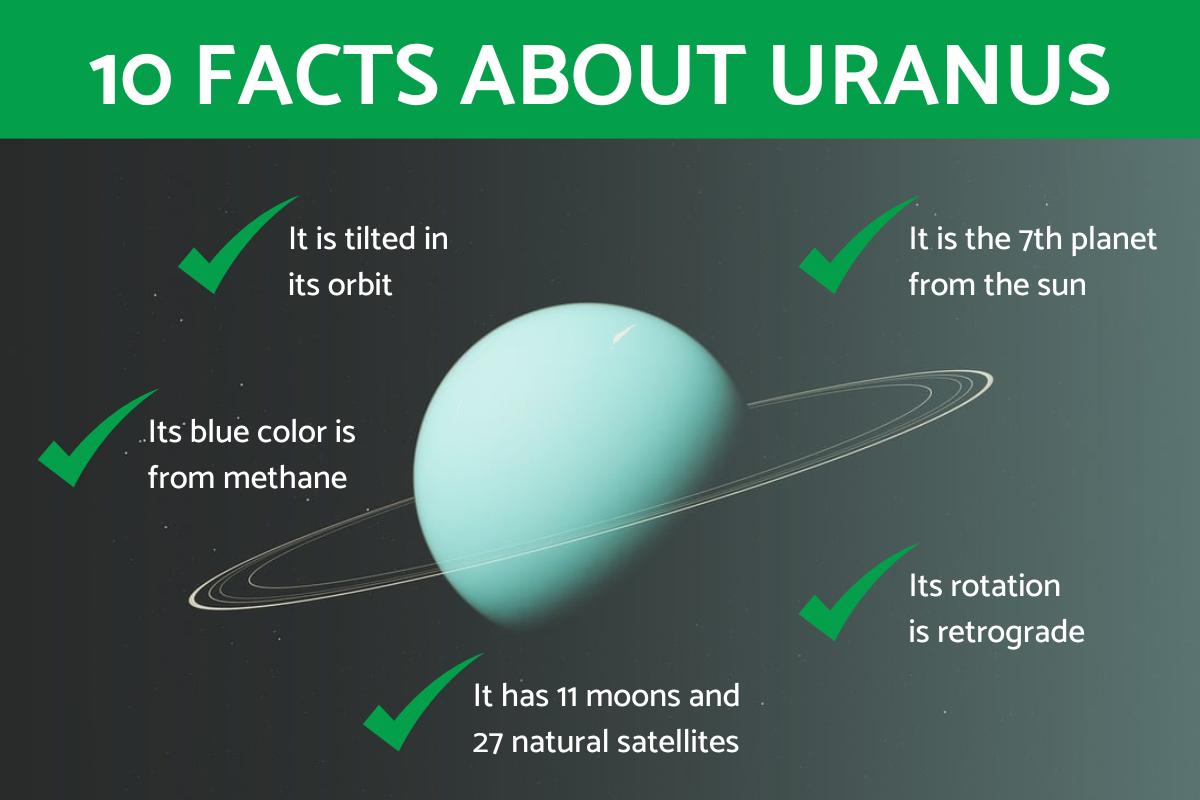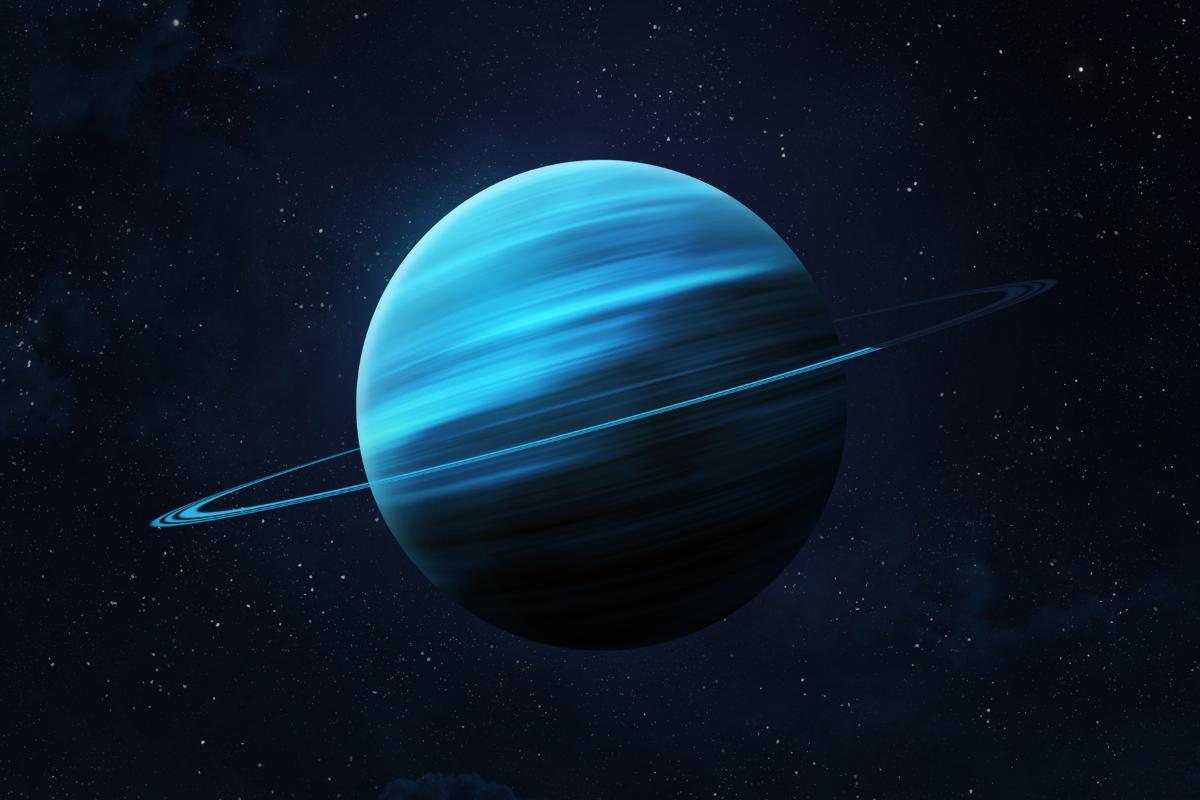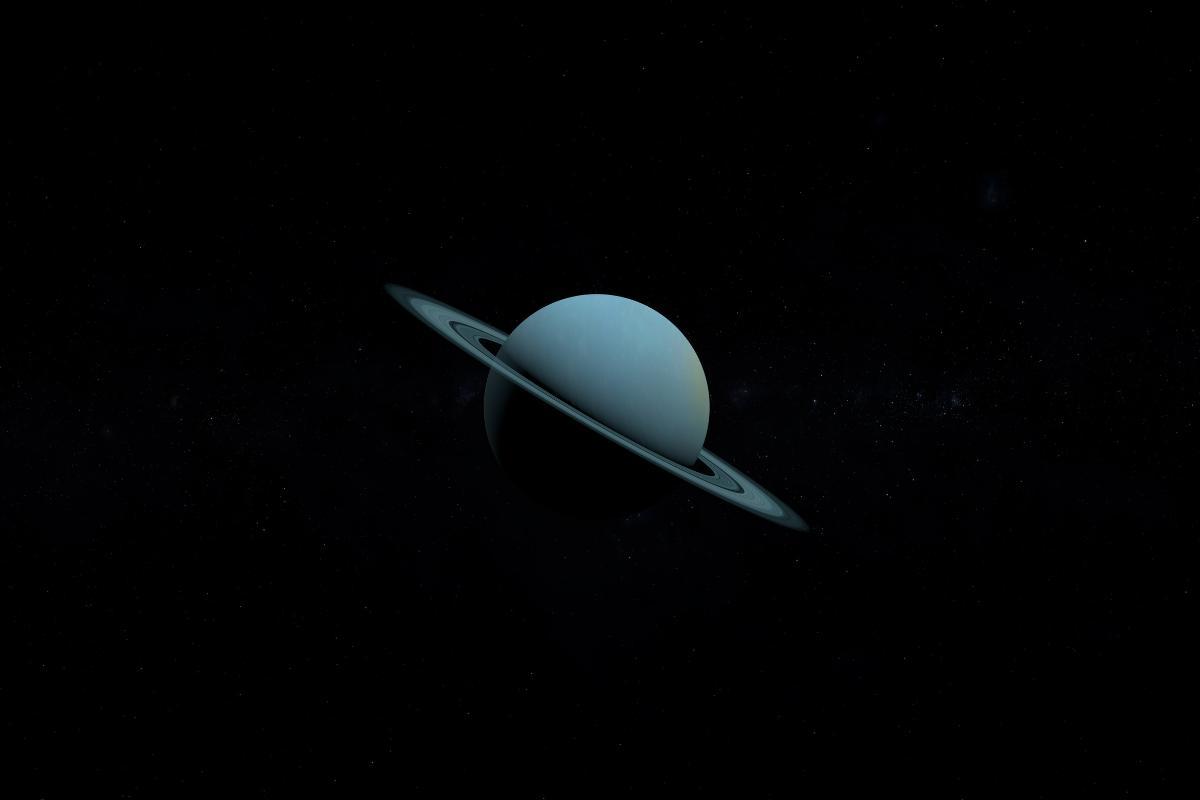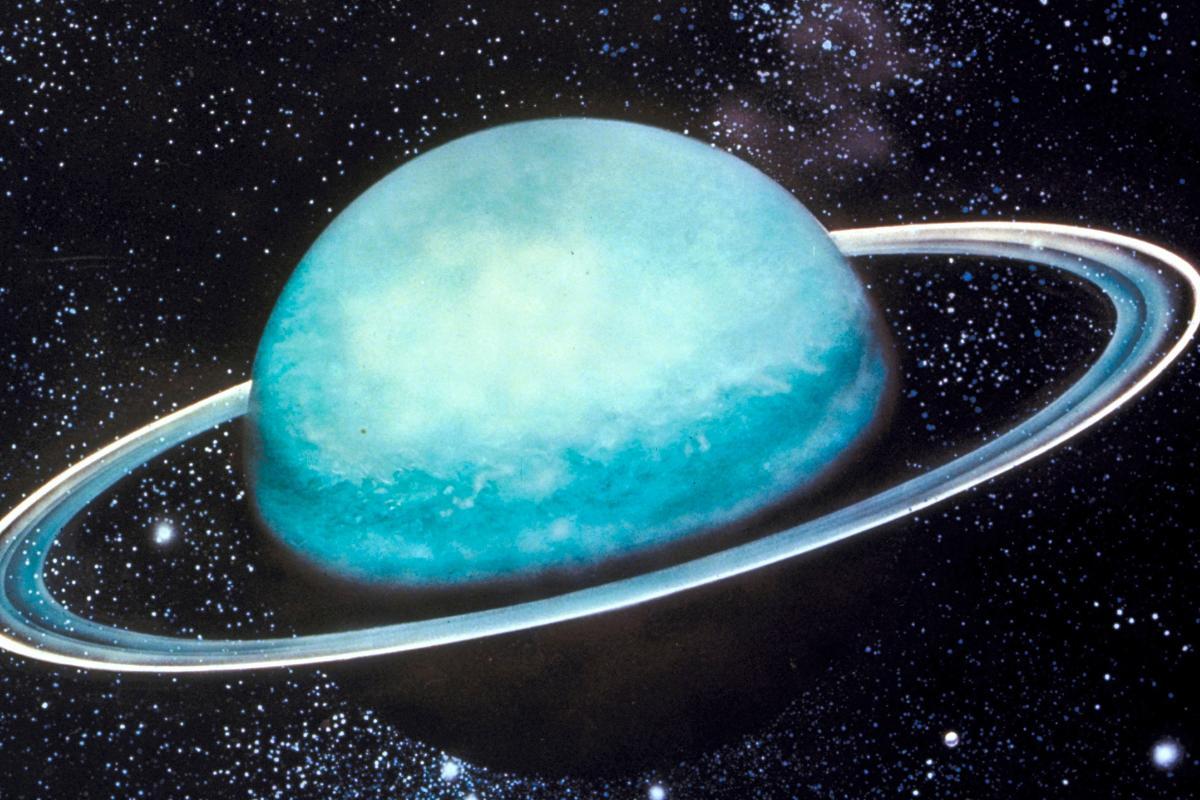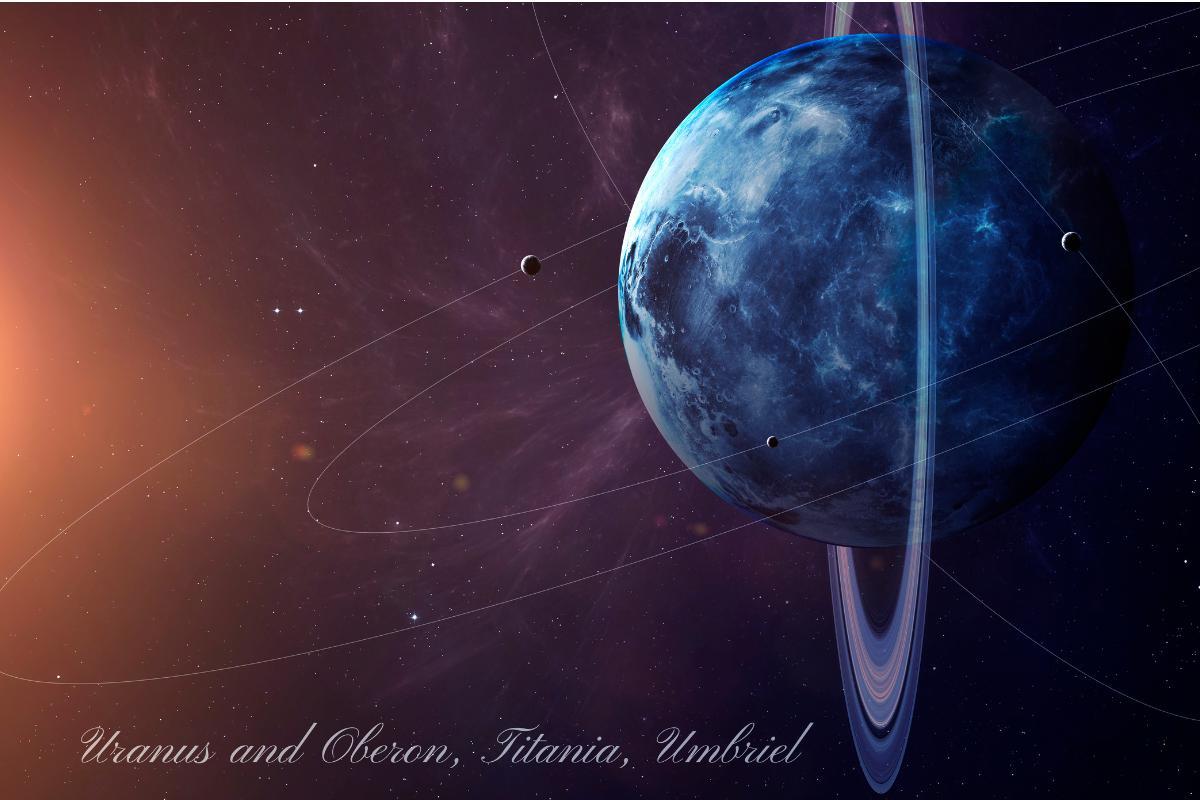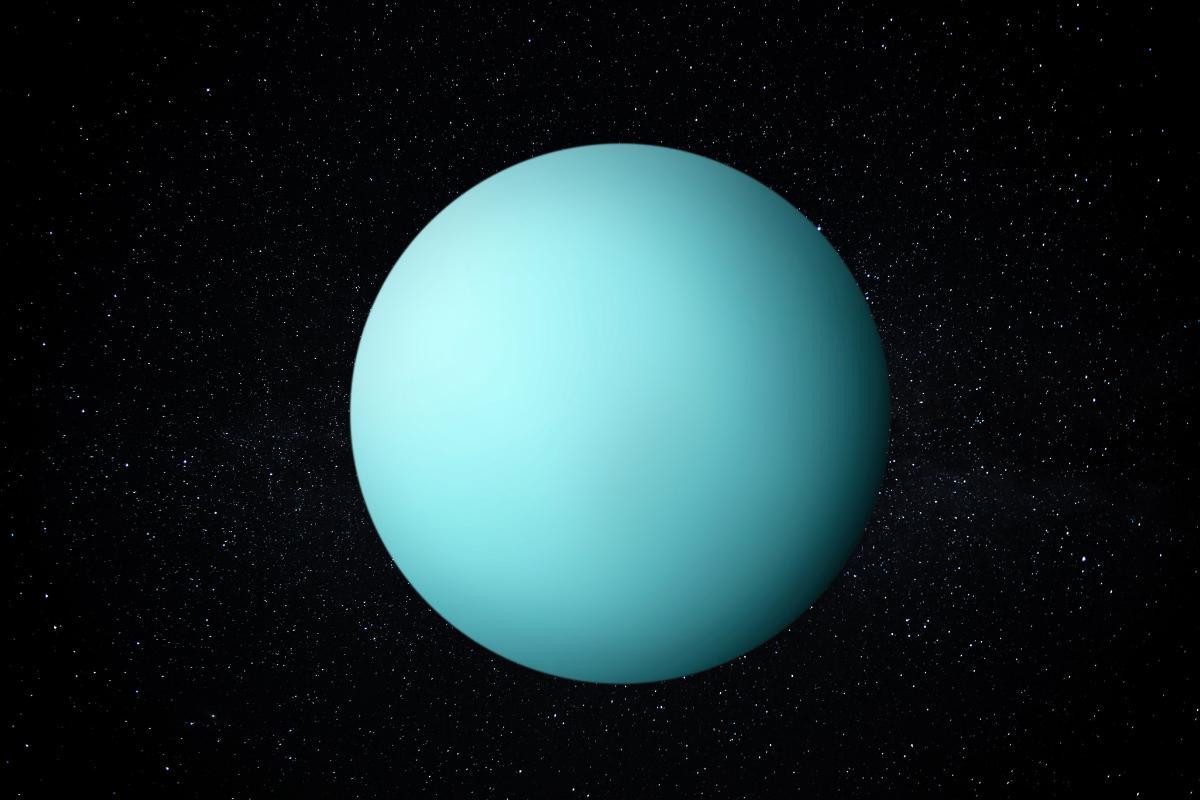Facts About the Planet Uranus


Uranus is the seventh planet away from the Sun and the closest it an ever be to our own planet Earth is 1.6 billion miles. Despite such a long distance away, you might be surprised how much astronomers are able to know about this ice giant of a planet. The information we have is not only vast, but it is not that recent. The planet was first discovered hundreds of years ago, although the exact circumstances of the first sighting are not exactly known. Thanks to advances in technology, our understanding has increased significantly. Learn more as thedailyECO shares 10 facts about the planet Uranus.
- Uranus was the first planet to be discovered with the help of a telescope
- Uranus is the seventh planet in our Solar System
- Uranus is distinguished by being inclined
- Uranus is an ice giant
- Uranus has 13 rings
- Uranus has 27 natural satellites
- The rotation of Uranus is retrograde
- Uranus has supersonic winds
- The blue color of Uranus comes from methane
- Uranus has extreme seasons
Uranus was the first planet to be discovered with the help of a telescope
We mentioned in the introduction that the circumstances around the planet Uranus's discovery are not well known. This is because it was seen many centuries ago, recorded by early astronomers such as Hipparchus. He likely believed it to be a star. It wasn't until technology was sufficiently advanced that Uranus was first identified as a planet. In fact, it was the first planet to be discovered with the help of a telescope.
Before it was discovered with a telescope, John Flamsteed first observed it as planet in 1690. He identified it under the name 34 Tauri. On 13th March 1781, Sir William Herschel discovered the planet with the help of a telescope that he had made himself.
A German musician at the court of King George III of England, Herschel first thought it was a comet. He later realized he was wrong and assumed that it was a star, naming it Georgium Sidus (George's star) in honor of his king. A French astronomer later proposed naming this star after Herschel himself. Finally, a German astronomer called Johann Elert Bode named it Uranus in honor of the Greek god.

Uranus is the seventh planet in our Solar System
Uranus is the seventh largest planet in our Solar System, also being the third largest and having the fourth largest mass. The distance between the planet Uranus and the Sun changes thanks to the former's elliptical orbit around the latter. We can say they have an average distance of around 1.8 billion miles (2.9 billion km) from each other. This is so far, if we could observe the sun from one of the poles of Uranus, we would see them very similar to any of the other stars in the Milky Way.
Uranus is distinguished by being inclined
Our next fact about the planet Uranus is how it is distinguished from other planets in the Solar System by its tilt. This position may be the result of a collision with a star that must have happened a long time ago when the planetary system was still very young. As it moves in its orbit, this tilt means the poles face the Sun at certain points. This characteristic is particular to Uranus, since it does not occur with any other planet in the Solar System.
Discover more about what are celestial bodies and how they interact with each other by reading our related guide.

Uranus is an ice giant
Uranus has a composition similar to Neptune, the only other planet in our solar system which is considered an ice giant. These are planets mainly composed of elements heavier than hydrogen and helium, containing ice, water, ammonia, methane and traces of hydrocarbons. Neptune's atmosphere is the coldest in the solar system, with a minimum temperature of -371.2ºF (-224ºC). While mainly composed of gas, its solid core is made of rocks and ice.
Uranus has 13 rings
Uranus has a ring system that was discovered in 1977, the second time to happen after Saturn's ring system was first discovered. There are currently 13 known rings, the brightest of which is the ε ring. All but two are very narrow, some only a few kilometers wide.
Studies indicate that the rings were developed relatively recently, since dynamic considerations show that they did not form together with the main planetary body of Uranus. The material they are made of may have come from satellites that were shattered by high-speed impacts. Of the numerous remains generated by these impacts, only a few particles remain that correspond to the current rings.
Discover more about another planet which is known to have rings with our article on the names of Neptune's rings.

Uranus has 27 natural satellites
Uranus has 27 natural satellites named after characters in the works of Shakespeare and the poet Alexander Pope. The five major moons are Miranda, Ariel, Umbriel, Titania, and Oberon. The largest moon is Titania (the eighth largest in the Solar System) with a radius of 490 miles (788.9 km), less than half that of our Moon and slightly larger than Rhea, Saturn's second-largest moon. These moons are made up of conglomerates of icy rock, composed of approximately 50% ice and 50% rock. The ice may contain carbon dioxide and ammonia.
Discover the moons of another planet in our Solar System with our article asking how many moons does Mars have?

The rotation of Uranus is retrograde
Uranus is one of two planets in the solar system that has a retrograde rotation, the other being Venus. This means it rotates in the opposite direction to most planets, i.e. from east to west. While most planets rotate on their axis counterclockwise when viewed from their northern pole, Uranus rotates in the other direction.
Uranus has supersonic winds
Although Uranus is an ice giant and its temperature is extremely low, that doesn't mean it is calm. In fact, its winds can reach impressive speeds of up to 559 mph (900 km/h). These winds blow in the opposite direction to the rotation of the planet. Although they are not as strong as those of Neptune, they are enough to make Uranus a planet of extreme weather conditions.
The blue color of Uranus comes from methane
The blue-green color of the planet Uranus is the result of the presence of methane in its atmosphere. Methane absorbs red light from the solar spectrum and reflects blue and green light, providing its characteristic hue. Despite sharing a similar composition to Jupiter and Saturn, the methane present in Uranus and Neptune gives them that distinctive color that visually differentiates them from the other gas giants.

Uranus has extreme seasons
The last fact about the planet Uranus we share is about its seasonality. Due to its peculiar tilt, Uranus experiences very extreme seasons. Each pole spends approximately 42 years in absolute darkness, followed by 42 years of continuous daylight. This phenomenon occurs because of the 98-degree tilt of the rotation axis. As a result, the seasons last about 21 years each, creating a unique environment compared to the other planets in the solar system.
Now that you know some interesting facts about Uranus, you may want to find out about the behavior of our own planet with our article asking why does the Sun rise in the east and set in the west?
If you want to read similar articles to Facts About the Planet Uranus, we recommend you visit our Facts about Earth and the universe category.





